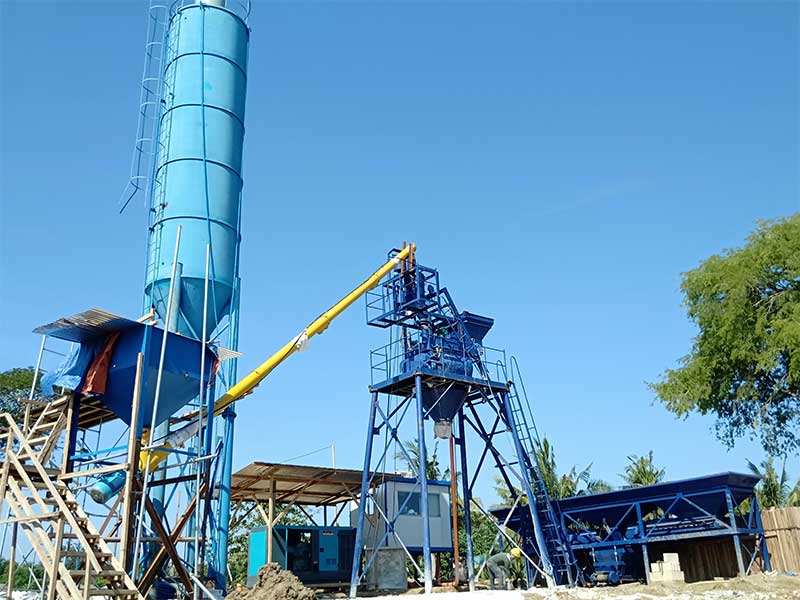What is a Concrete Mixing Plant?
A concrete mixing plant, referred to as a mixing plant or batching plant, is a piece of construction application equipment designed to mix coarse aggregates, sand, cement and other admixtures to produce homogeneous concrete. The final mixture can be widely used to build skyscrapers, sidewalks, bridges, houses, highways, airports etc.
The Main Components Include the Following
Aggregate feeder: The feeder unit is one of the important components. There are bins placed side by side to facilitate the feeding of coarse aggregates and sand. Different number of bins put different sizes of aggregates/sand into different compartments. The reason for putting each material (size size) into separate bins is that each material will be weighed separately according to the specified mixing ratio.
Aggregate weighing conveyor: The weighing conveyor is usually located below the aggregate feeder. It is suspended from a load cell. It is the loading conveyor that weighs the aggregates one by one and transfers them to the skip. The aggregate is discharged to the weighing conveyor by opening and closing the cylinders.
Charging conveyor/skips: The charging conveyor or skips transport the weighed aggregates to the mixing unit.
Cement weighing scale: The cement weighing scale will hold the small amount of cement that is transferred from the cement silo/hopper by means of a screw conveyor. Its task is to weigh the aggregate prior to distribution to the mixing unit.
Water Scale: The water scale receives water from the pump. It will hold and weigh the water according to the recipe set in the control panel and then add it to the mixing unit.
Additive weighing scales: The additive weighing scales are suspended from load cells and they will weigh the additive material before sending it to the mixer.
Cement silo/hopper with screw conveyor: The cement silo is used to store large quantities of cement in bulk trucks. It is usually equipped with safety attachments. A screw conveyor of suitable diameter and length at the bottom transfers the cement into the cement weighing hopper. Many small capacity batching plant machines are equipped with cement hoppers. The hopper has a large opening to facilitate the addition of bags of cement. The bags must be placed on top of the hopper and once torn, the cement will fall into the hopper. The cement hopper is also equipped with a screw conveyor for transferring the cement into the weighing hopper. Usually, there are 2 openings at the top of the weigh hopper for 2 inlets of the screw conveyor.
Mixing Unit: This is the most critical part and the heart of the concrete mixing plant. The mixer's job is to receive all the ingredients and mix them thoroughly for a fixed period of time. It then discharges the contents into the transport mixer or concrete pump.
Air Compressor: The air compressor is one of the important components here. It is used to control all the pneumatic operations of the concrete batching mixer, such as the opening and closing of the cylinder that controls the feeder gate, the opening and closing of the butterfly valve that contains the weighing hopper, the opening and closing of the mixing unit gate, etc.
Types of Concrete Plants
Manufacturers have designed concrete plants into different types to meet individual needs. These different types will help to meet different requirements.
There are two main types of concrete plants.
As the name suggests, a dry mix plant makes a dry recipe before sending it to a transport mixer. All the required materials, such as aggregates, sand and cement, are weighed and then sent to the transport mixer. Water is added to the transport mixer. On the way to the site, the concrete is mixed in the transport mixer.
In the case of wet mix type machines, the materials are weighed individually and then added to the mixing unit, which will mix the materials uniformly and then distribute them to the transport mixer or pumping unit. Also known as central mixing plants, they provide a more consistent product because all components are mixed in a central location in a computer-aided environment to ensure a homogeneous product.
Please contact us if you have a purchase request.















